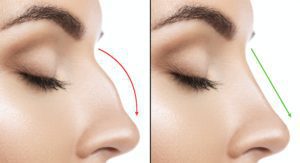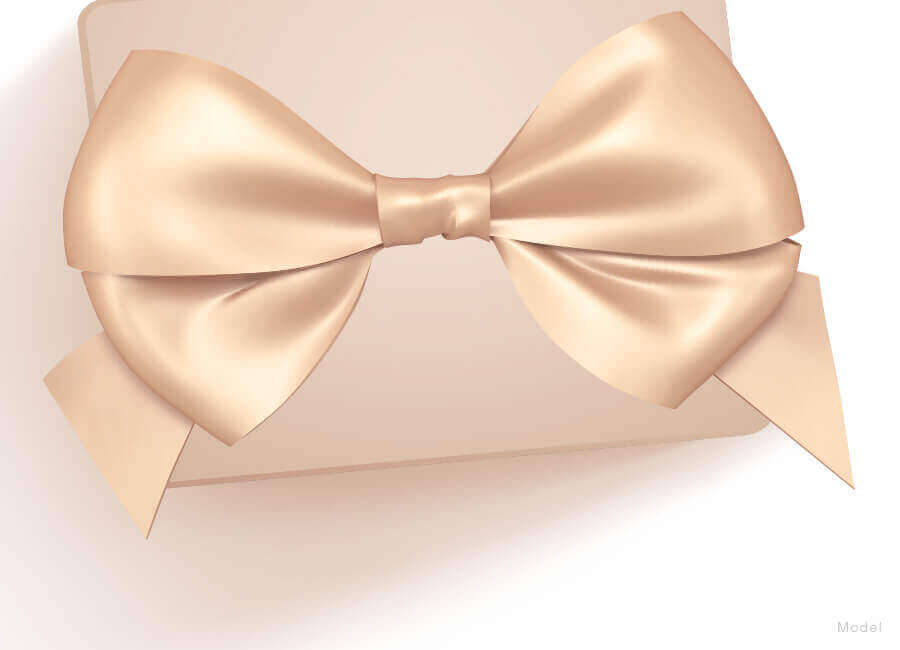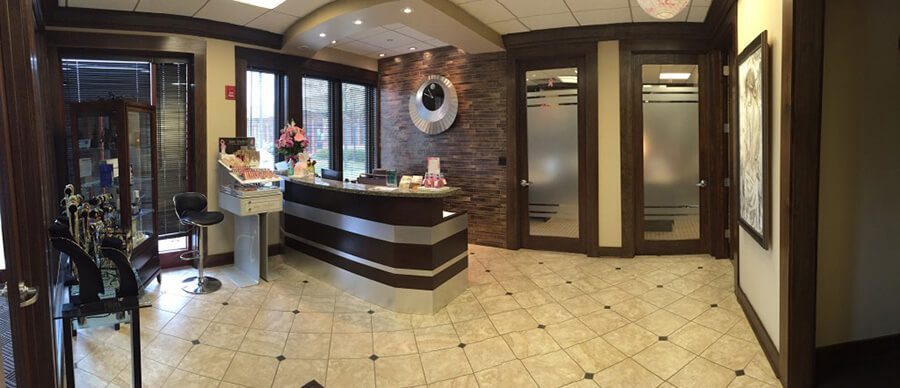Posted in Facial Plastic Surgery
 Some people who have undergone rhinoplasty may later desire rhinoplasty revision. This secondary procedure can adjust results, correct injuries, and improve the appearance of the nose. The following questions and answers about revision rhinoplasty may help you better understand why people pursue this procedure and whether it could help you.
Some people who have undergone rhinoplasty may later desire rhinoplasty revision. This secondary procedure can adjust results, correct injuries, and improve the appearance of the nose. The following questions and answers about revision rhinoplasty may help you better understand why people pursue this procedure and whether it could help you.
How do I know when to consider revision rhinoplasty?
You may want to consider revision rhinoplasty if you are unhappy with the appearance of your nose after your original rhinoplasty. It is best to wait up to one year for the delicate tissues of the nose to heal before undergoing revision rhinoplasty. If you are dissatisfied with how your results have changed over time (which is always a possibility), revision rhinoplasty may be recommended. Additionally, if your nose has been injured after rhinoplasty, and its appearance has been permanently altered, revision rhinoplasty will be required.
Who should I go to for rhinoplasty revision?
For your rhinoplasty revision, you should go to a board-certified plastic surgeon who has extensive experience in performing both rhinoplasty and revision rhinoplasty procedures. In some cases, it may be appropriate to go to your initial surgeon, as the need for rhinoplasty revision may arise even when rhinoplasty is performed by a highly skilled surgeon. Your initial surgeon will want you to be satisfied and may be willing to perform revision surgery if they feel confident about their ability to improve the results. If not, they may recommend a revision rhinoplasty expert. Be sure that your revision rhinoplasty surgeon understands you and your concerns, speaks openly and honestly with you, and makes you feel comfortable and confident about your potential results.
Is revision rhinoplasty safe?
Revision rhinoplasty is a safe but complex procedure. Patients should only go to an experienced well-trained rhinoplasty surgeon to ensure the best outcomes. As all surgeries carry some risk, your surgeon will indicate whether it is advisable for you to undergo this procedure.
When is it safe to undergo revision rhinoplasty?
It is best to wait approximately one year after rhinoplasty before undergoing revision surgery so that the tissues are mostly healed. Your surgeon will be able to determine when it is safe and appropriate for you to undergo revision rhinoplasty.
Why is revision rhinoplasty harder than rhinoplasty?
Rhinoplasty is a difficult procedure, and many risks or complications can occur. Revision rhinoplasty is usually even more difficult and has additional risks. The surgeon must work around scar tissue, accommodate weakened and traumatized soft tissue, and quickly adapt to the changes to the natural anatomy that make navigating the internal structures more complicated. The surgeon may also have to deal with overcorrection, injuries, or other complications. Secondary rhinoplasty has a higher risk of complications and problems than rhinoplasty, but with the right surgeon, the results can be incredibly rewarding.
Why is my nose crooked after my rhinoplasty?
Crookedness or asymmetry to the nose after primary rhinoplasty can be evidence of asymmetrical healing. Postoperative scarring is unpredictable, and scar tissue may form unevenly and cause your nose to appear crooked. This can occur through no fault of the surgeon and may often be corrected through revision rhinoplasty.
Can revision rhinoplasty fix a pinched tip?
A pinched nasal tip after rhinoplasty is often caused by either the removal of too much cartilage or poor healing and collapse of the tip cartilage. Revision rhinoplasty can use a cartilage graft to add volume to the tip and correct the pinched appearance.
Are my poor results because of poor technique?
Poor rhinoplasty results are just as likely to be the results of poor technique as the results of poor healing and unexpected changes. For example, a collapsed or pinched tip could be the result of either over-reduction or poor healing. Even if you have done your research and selected a top-notch rhinoplasty surgeon, you may still wind up with unanticipated deformities due to how your nose heals. For instance, unanticipated scar tissue buildup can cause the nose to become crooked or develop a hump along the bridge after rhinoplasty. The complexity of rhinoplasty and the risk of unexpected changes means that rhinoplasty has a higher revision rate than other aesthetic procedures.
Why do my results look different now than they did after my rhinoplasty?
Our anatomy goes through natural changes all the time; therefore, it is not unusual to observe changes to the appearance of your nose several years after your rhinoplasty. These changes may be subtle or more pronounced. Changes to the results may cause patients to seek revision rhinoplasty even years after their primary rhinoplasty.
If I injured or broke my nose after rhinoplasty, can revision rhinoplasty help me?
Revision rhinoplasty can often fix injuries that occur after a previous rhinoplasty. Your rhinoplasty surgeon will be able to determine the best way to restore your nose’s appearance and reverse the effects of the injury.
When is the best time to get revision rhinoplasty?
It is best to wait approximately one year after rhinoplasty before you get revision rhinoplasty to resolve healing and any lingering swelling. After this point, patients may be able to undergo revision rhinoplasty nearly anytime—even many years later—if they desire.
How many times can I safely undergo rhinoplasty revision?
There is no recommended maximum number of times to undergo rhinoplasty revision. However, the nose is a highly complex structure, and rhinoplasty is a difficult procedure. The more rhinoplasties a person undergoes, the more complicated the procedure becomes. Having multiple procedures increases the risk of complications and the potential for permanent problems. Some of the main reasons for this are the buildup of scar tissue, weakening soft tissue, thinning skin, overcorrection, weakening the nasal structure in an attempt to minimize the nose, and even the potential for increasingly obsessive or unrealistically perfectionist tendencies in the patient. All of these things can occur as more rhinoplasty procedures are performed, as each new procedure increases your risk. Despite these issues, an experienced surgeon may be able to produce excellent outcomes even after multiple rhinoplasty revisions.








